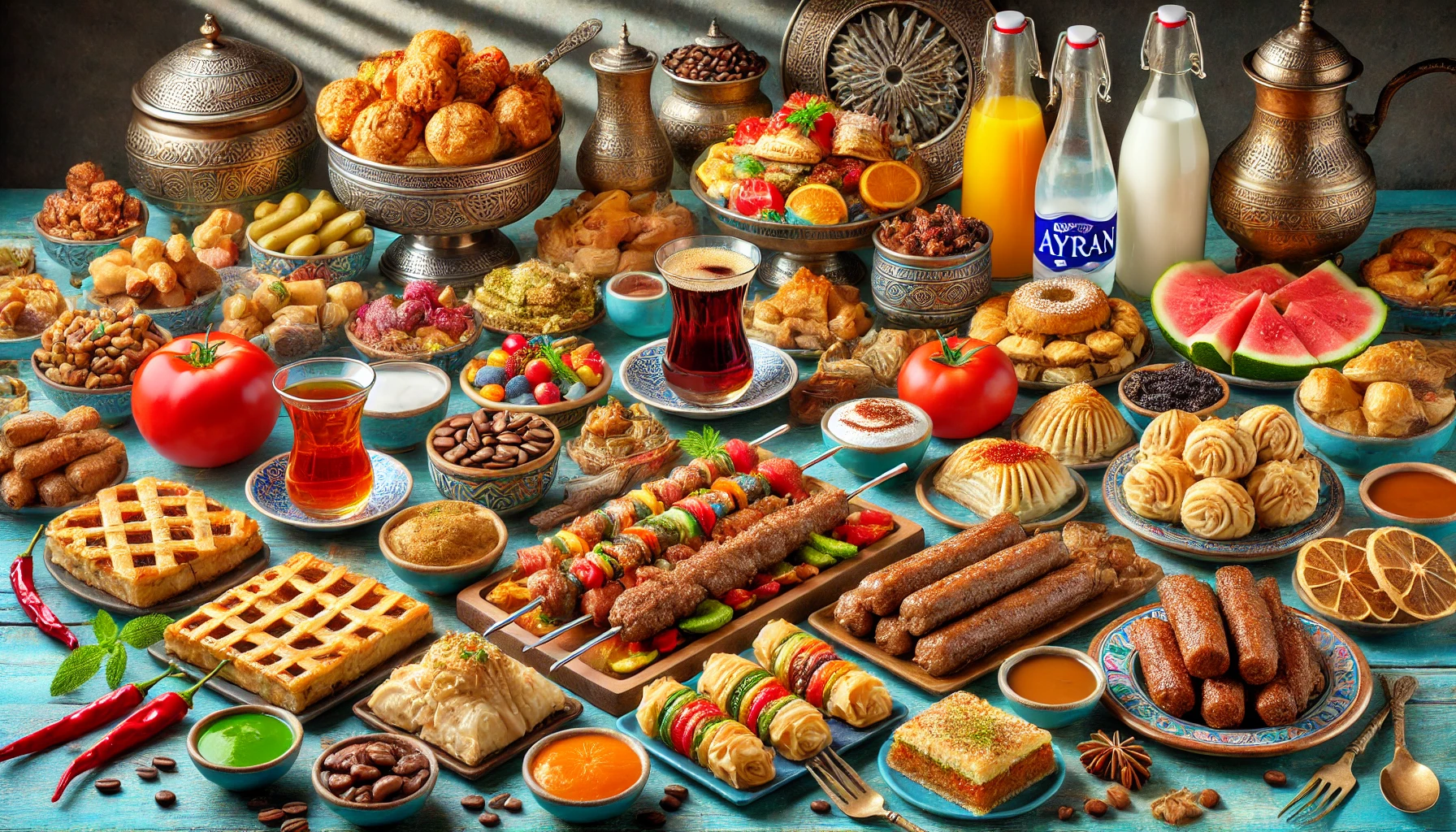Savor the Flavors of Turkish Cuisine
Gourmets should definitely not miss the chance to taste the traditional kebabs, pastries, diverse kinds of baklava, Turkish coffee, ayran, and syrups, which are among the most delicious specialties of Turkish culinary culture. Turkey’s rich culinary heritage is a testament to its diverse history and cultural influences, offering a mouth-watering array of flavors and dishes that will delight any food enthusiast.
Traditional Kebabs: A Meat Lover’s Delight
Kebabs are a cornerstone of Turkish cuisine, offering a variety of flavors and cooking styles that vary by region. From the succulent skewers of meat grilled to perfection to the famous döner kebab, there’s a kebab for every palate.
Adana Kebab
Originating from the southern city of Adana, this spicy minced meat kebab is cooked over an open flame and served with flatbread, grilled vegetables, and a side of sumac onions.
Iskender Kebab
Hailing from the northwestern city of Bursa, Iskender kebab features thinly sliced döner meat served over pieces of pide bread, drenched in tomato sauce and melted butter, and topped with a dollop of yogurt.
Pastries: A Sweet and Savory Experience
Turkish pastries are a delight, offering both sweet and savory options that are perfect for any time of day.
Börek
Börek is a savory pastry made from thin layers of dough filled with various ingredients such as cheese, spinach, or minced meat. It’s a popular breakfast item and snack throughout Turkey.
Simit
Simit, often referred to as the Turkish bagel, is a circular bread encrusted with sesame seeds. It’s typically enjoyed with cheese, olives, and tea for a light breakfast or snack.
Baklava: A Sweet Symphony
Baklava is perhaps the most famous Turkish dessert, known for its rich, sweet layers of filo pastry, chopped nuts, and syrup or honey.
Classic Pistachio Baklava
The classic version of baklava is filled with finely ground pistachios and drenched in a sweet syrup, creating a delightful blend of crunchy and sweet flavors.
Walnut Baklava
Another popular variation, walnut baklava, uses walnuts instead of pistachios, offering a slightly different but equally delicious taste experience.
Turkish Coffee: A Cultural Ritual
Turkish coffee is not just a drink but a cultural ritual. Finely ground coffee beans are simmered in a special pot called a cezve and served in small cups, often accompanied by a piece of Turkish delight.
Brewing and Serving
The process of making Turkish coffee is an art in itself. The coffee is brewed slowly to create a rich foam on top and is typically enjoyed with friends and family, making it an essential part of Turkish hospitality.
Ayran: The Refreshing Yogurt Drink
Ayran is a traditional Turkish yogurt drink made by mixing yogurt, water, and a pinch of salt. It’s a refreshing and healthy beverage that perfectly complements the rich flavors of Turkish cuisine.
Cooling and Hydrating
Ayran is particularly popular during the hot summer months, offering a cool and hydrating refreshment that’s both nutritious and delicious.
Syrups: Sweet Elixirs
Turkish syrups, known as şerbet, are sweet drinks made from fruit juices, herbs, and spices. They are often enjoyed as a cooling beverage or as a dessert accompaniment.
Pomegranate Syrup
Pomegranate syrup is a tart and sweet drink that offers a burst of flavor and is often used in cooking and as a refreshing beverage.
Rose Syrup
Rose syrup, made from rose petals, is a fragrant and sweet elixir that’s often enjoyed during special occasions and celebrations.
Conclusion
Turkey’s culinary culture is a feast for the senses, offering a rich array of flavors and dishes that reflect its diverse history and cultural influences. Whether you’re indulging in traditional kebabs, savoring sweet pastries, or enjoying a cup of Turkish coffee, the country’s cuisine is sure to leave a lasting impression. Gourmets and food enthusiasts should seize the opportunity to explore the delicious specialties of Turkish culinary culture and experience the true taste of Turkey.
Latest Update: May 21, 2015
Your Content Goes Here
A brief summary of the key points in this article.




